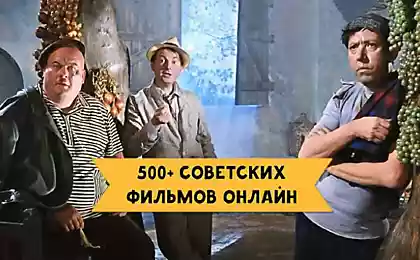912
When the technology needs ahead: how to think about the development of IT in 1985

Possible applications of personal computers in the business are enormous. As a practical acknowledgment of these features can produce word processors and editors tables - they were not just widespread instruments of professionals, but also the means by which begins to depend on the daily conduct of business. However, in the process of strengthening the current situation, our modern electronic applications, times are tough.
Among these applications: teletext, videotex, and email. The first two of them, apparently, will cease to exist, and the latter is clearly suffering from a much slower growth than predicted by its proponents. The reason for the slow progress is that in each case technology achievements are far superior to the needs of users.
Consider teletext, the most primitive of the three above-mentioned applications. Teletext - continuous transmission of information on the TV screen. Data is transmitted through human extinction pulses that separate fields that make up the image video broadcasts.
The effect is similar about the way if you were looking through a window with downcast, but uncovered blinds. You see the scenery outside the window, but do not pay attention to the lattice shutters. When teletext so-called "grid" transmits signals text - although the text usually appears as a narrow strip at the bottom of the screen. Consumer, using a special decoder can switch from a football match to a text message about the weather forecast or the latest news from Beirut.
Companies spend millions of dollars on projects related to the teletext - these amounts could bring much more profit if they are simply placed in the bank at interest. Because people are ultimately interested in football. Teletext turns into excess and unnecessary information.
The only exception - the case when the redundant information is written for people with hearing impairments. The technology originates from teletext subtitle transmission in conjunction with conventional broadcast TV programs, so that the story can be lead and listen and read. This is an excellent use case - and the only one in which the Teletext can be used for a long time.

Videotex - somewhat different technology, because it is interactive. This bi-directional system, which allows the user to select the information or task that he wants to accomplish. Initially, the choice could be made using a special terminal or keyboard, used in conjunction with a standard TV. Both methods involve the need to spend a lot of money on something that users are in reality it was unnecessary, and both of these methods were not popular. Over the past year or so supporters videotex started an active interest in the world of personal computers. This change marketing course is aimed at promoting the services - and, incidentally, helps to justify the reason for the acquisition of a home PC.
Central to the new concept of videotex considered home banking. For the vast majority of individuals and companies, however, carry out banking transactions from your computer hardly more comfortable than a toothpick fish out of the barrel pickles. Home-based program for carrying out banking operations, even advertised program Pronto, sponsored by Chemical Bank, grow much more slowly than predicted. Videotex services, according to their creators, will continue to support activities such as brokerage operations in the stock market, tourist services, shopping catalogs, and even services on housing. However, I doubt that many will be willing to exchange real shopping on the opportunity to buy a new refrigerator or washing machine, simply by pressing a few buttons on the computer.
We - the nation of those who come into the store, "take a look" at the goods. With all due respect, I can only shake my head, thinking about the millions of dollars that are spent on the development of applications for videotex companies do not seem to understand the basic principles for the use of personal computers. PCs need to save money and time and for entertainment. Videotex not have anything to do with. "We are very much expected from the information services that are not supported by any teletext or videotex" - says Michelle Preston, an analyst at Technology Industry Investment LF Rothschild. "They just do not provide a sufficient level of value to arrive at success."
Now consider the e-mail, the new offspring of postal services, and numerous companies from conglomerate Bell Telephone Company. Currently, the company promoting the service, called e-mail, also provide related services such as connecting the subscriber to the network Telex and delivery of documents in the format of letters to a set of points in the United States for two hours. They all found that in itself is not the e-mail can attract enough users to exceed the cost of business investment in this technology.
E-mail allows you to type letters on a PC or a terminal, and then send them via cable, telephone modem or via satellite on your PC or terminal receiver. One of the advantages of this so-called system - is the ability to store and forward messages. The user can send messages at any time and, in contrast to telephone communication, e-mail does not require the recipient at the other end at the time of transmission. But in this respect, and good old-fashioned mail works the same way.
Given all this, e-mail in most cases no more effective than ordinary mail or telephone, which is designed to displace first. In addition, it does not provide and opportunity for delivery of parcels, as it makes other innovative system - service express delivery from Federal Express.
In addition, e-mail is faced with the problem of interoperability, which affected the entire PC industry since its inception. At the moment, there are about a dozen services, among which: MCI Mail, EasyLink from Western Union, Dialcom from the ITT Corporation and Quick-Comm by General Electric - none of these services can not be linked with the other.
The situation is comparable to the emergence of a dozen different postal services, each of which can be delivered, or may not deliver the message of a particular company, for which the message was intended. Before sending the letter, the company will have to determine, and whether it can actually be delivered.
The problem is compounded by the fact that e-mail is no central dispatch system. And there is no unified leadership for the subscribers of different services, which could help companies determine which potential recipient e-mail to which the service belongs. To date, the solution to the dilemma for e-mail is seen as a hybrid consisting of a half-mail, half traditional mail, the epitome of which were popular now orange envelopes MCI.
There is a strong possibility that even before the network will be created general e-mail, e-mail, along with teletext and videotex, turn into a handful of specialized applications. In general, from the standpoint of these technologies information exchange concept seems interesting. But from an economic point of view, such ideas are naive and, more importantly, no more convenient than existing alternatives.
Source: habrahabr.ru/company/celecom/blog/246969/
























